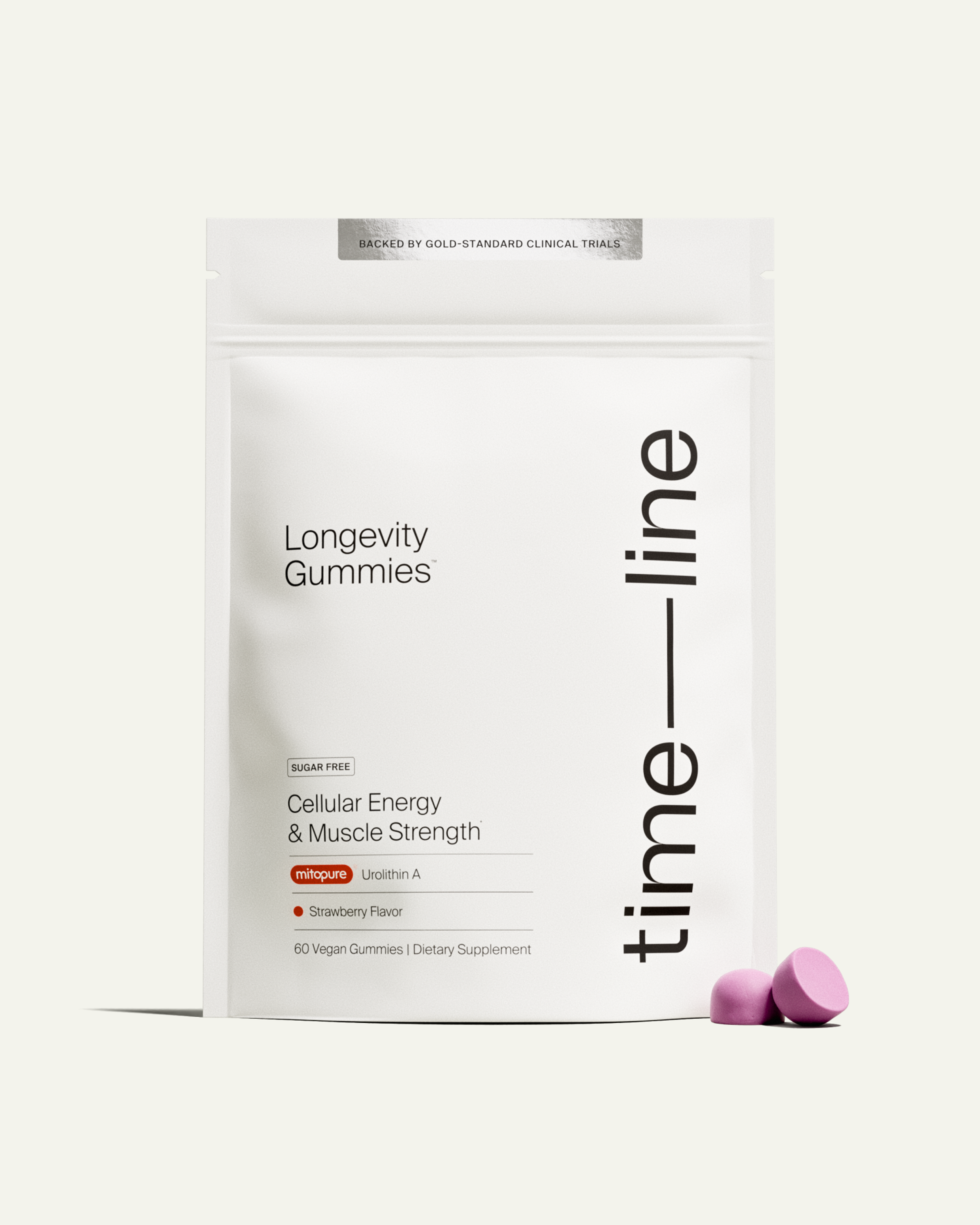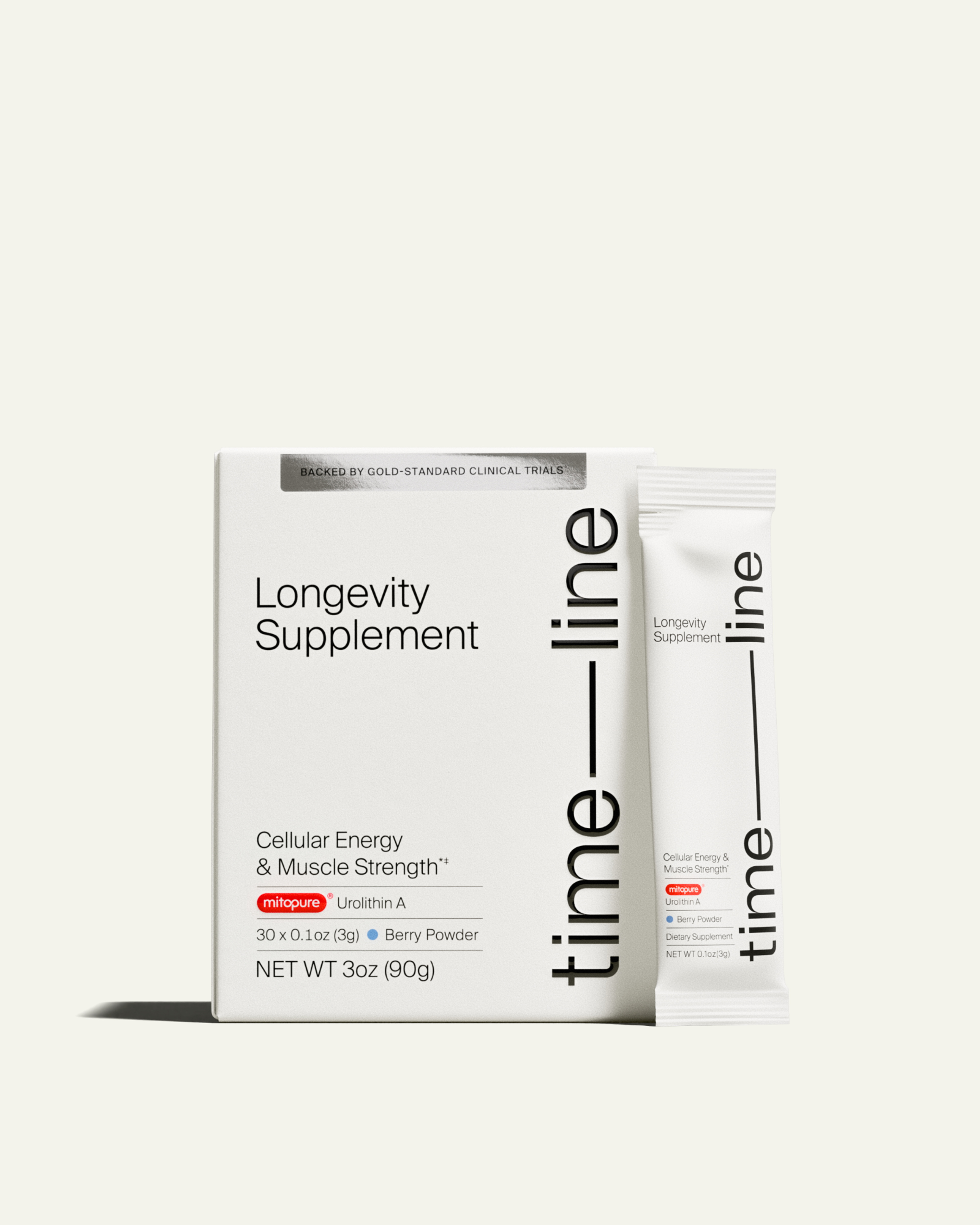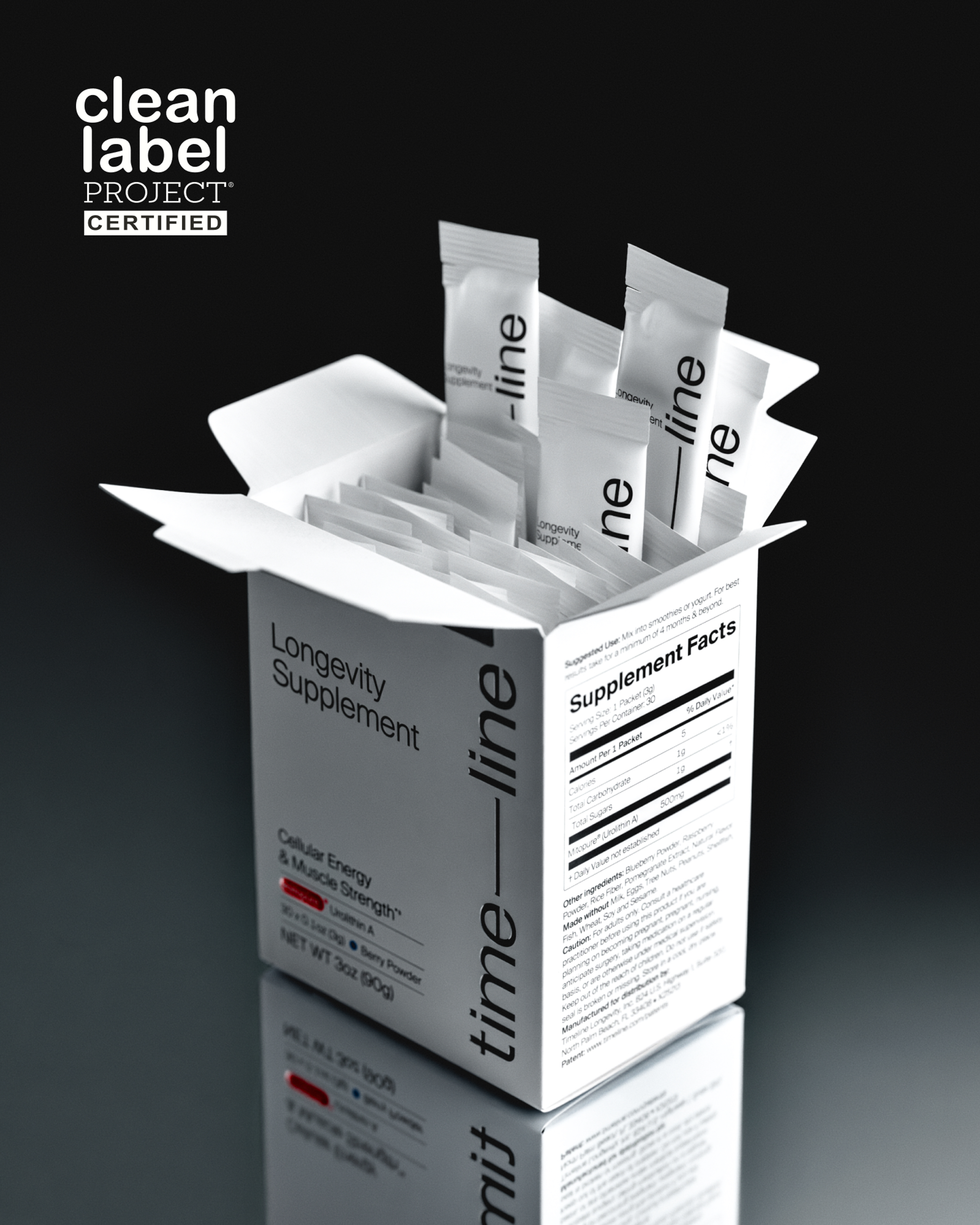Bridging the longevity gap: Six tips for men's health
The average lifespan of a man is five years shorter than a woman in the US. Here are six men’s health strategies that can extend life expectancy.

What to know
In the United States, men’s life expectancy is 76.4 years, compared to 81.4 years for women.
There are differences in genetics and cellular health, but the main cause of this longevity gap relates to health behaviors.
Exercising to improve VO2Max can improve men’s life expectancy.
Eating a Mediterranean diet that reduces meat consumption could improve the average lifespan of a man.
Mental health concerns are a key driver of mortality in men.
It's widely known that women tend to outlive men, but recent trends are highlighting a growing concern among researchers: the longevity gap between the sexes is widening. The longevity gap refers to the difference in life expectancy between men and women, and it's becoming increasingly pronounced.
A recent study showed that the difference in life expectancy in the U.S. by gender is at its largest since 2021—reaching 5.8 years. [1]This expanding gap underscores the need to focus on men's health to help close the disparity and promote longer, healthier lives for men.
The researchers explain that COVID-19 deaths disproportionately impacted men, but women tend to have genetic, hormonal, and lifestyle differences that contribute to their longer lives.
The widening gap underscores the need to focus on men's health to help close the disparity and promote longer, healthier lives for men. Timeline’s Research and Development group leader, Dr. Davide D'Amico PhD, shares some insights into the biochemical differences between men and women and offers his top science-backed lifestyle tips men can adopt today to improve their healthspan.
How does cellular health play a role?
Mitochondrial health is a key driver of healthy longevity, and new research is shedding light on interesting differences between men and women. For example, mitochondria in women have more affinity for oxygen—a critical property to the organelle’s ability to make cellular energy.[2]
But many of the differences between men’s and women’s cellular health are still being researched, says D’Amico. Part of this is due to the fact that the female sex has not been researched as much as the male across all animal species.
Sex differences in research
“Research starts with experimental models: You test a molecule, and you see how it impacts the biology and health of these models. Historically, there is a bias, and such basic research is done mostly, often only, in males,” D’Amico says. This means that the deep science of longevity is better understood in males than in females. In humans, he says: research is more gender-balanced. However, in humans we cannot dissect the exact mechanism driving health and longevity as we do in experimental models. So, there’s a gender gap in our understanding—and that extends to not knowing all the sex-specific differences that result in longer life for women on a cellular or genetic level.
But here’s the good news about the gender longevity gap, D’Amico says. First, the longevity science community is now gathering more and more data on sex-specific genetic and epigenetic differences by including both females and males in their pre-clinical studies. Second, only around 20 percent of the difference in life expectancy between men and women is a result of sex differences like genetics and epigenetics. That means the other 80 percent relates to behaviors—and that’s the 80 percent men can actually change.
But there’s also a lot of something else: advice on which behaviors to change. For men’s health month, let’s get gender-specific: Here’s a six-pack of age-defying behavior changes that address men’s issues and are backed by scientific research to improve healthspan.

Movement is a must
Going from zero exercise to just some exercise makes a big difference: A 2022 study published in the European Heart Journal found that as little as 15 minutes of vigorous exercise weekly had a lower mortality risk.[3]
Exercise is proven to be the most efficient medicine against any age-related condition.Davide D’Amico, Ph.D., R&D Group Leader with Timeline
More is even better. Another study found that those who bumped their exercise up to 75-149 minutes per week—the amount recommended by the United States Department of Health and Human Services—had a 19 percent lower early death risk, including a 31 percent reduction of risk for death by cardiovascular disease[4].
What’s interesting is that recent studies show that the impact of exercise is sex-specific, and men need more exercise volume than women to reach the same health benefits. A study published in the Journal of the American College of Cardiology proves this. The researchers found that men had the greatest benefit when they were active for 300 minutes a week, but women only had to be active for 140 minutes a week to achieve a similar benefit.[5]
VO2 max as a measure of healthspan
V02 max is a measure of the maximum amount of oxygen your body can use during exercise. It tells you how well your heart can circulate blood to your muscles and how well your muscles can grab the oxygen from that circulating blood.[6]
VO2 max has long been a measure of how fit an athlete is, but in recent years, it’s become synonymous with longevity. As we age, VO2 max declines, but people with higher V02 max tend to have a lower risk of all-cause mortality.[7]
How to improve VO2 max
VO2 max can be improved through high-intensity interval training (HIIT), where bouts of high-intensity work are paired with shorter intervals of easier work. These workouts are thought to improve VO2 max because they challenge exercisers to work at or near their own VO2 max. Many HIIT workouts involve repeating the same intense efforts over and over again: For example, workouts inspired by the studies of Izumi Tabata—now called Tabata workouts—involve intervals of 30 seconds of work alternated by 15 seconds of rest.[8]
Focus on social connections
Women are more likely to exercise in a group, whereas men tend to hit the gym solo (unless playing in a group sport). But D’Amico points out that doing exercise in a social setting may have a greater benefit than doing it alone. Adding a social element to exercise can improve how much men exercise, according to research, and also improve their social well-being.
“When you share the passion [of sport] with others, this makes it easier to do and to stick to your exercise routine,” he says. “Here, too, it is a bridge with the mental well-being aspect [of longevity]…to having good social connections.”
Social connections are a big deal for longevity, with several studies linking healthy friendships and relationships with a healthier life and longer life.[9] And participating in sports—whether it’s joining a pickleball group, a running club, or even finding a local friend who can get together to shoot hoops once per week—is an easy way for men to navigate more frequent social connections.

Less red meat, more vegetables and healthy fats
Men consume more meat than women do, D’Amico says. And research shows that this disparity increases as men reach and surpass middle age.
That leaves less room for fruits and vegetables: Statistics from the CDC show that, in particular, men consume significantly less dark green vegetables than women[10]. This may have consequences for healthspan, since dark green vegetables are packed with polyphenols, compounds that act as antioxidants in the body and fight against inflammation. Diets rich in these compounds have been found to slow—and even reverse—biological aging.
For D’Amico, eating for longevity means a Mediterranean diet. This diet, which is rich in plant-based foods and lower in meat consumption, and features dark-colored vegetables, healthy fats from olive oil, nuts, and seeds, and low consumption of dairy products, has been shown in multiple studies to reduce risks of heart attack, stroke, and other chronic diseases.
This is a longevity strategy that’s easy for D’Amico to follow, he says, for two reasons. For starters, he’s from Italy—so, the Mediterranean. And the second, more important reason: It’s delicious.
Develop strategies to manage stress
To D’Amico, improving men’s longevity has three pillars: Nutrition, exercise, and the mind. In analyzing the gender longevity gap, scientists have found that men are increasingly dying from what are called “deaths of despair”: Drug overdoses, alcohol poisoning, and suicide, all causes associated with declines in mental health.
Dealing with mental health issues, including seeing a therapist, is still stigmatized for men[11] but women are much more likely to seek mental health treatment than men.[12]
For men who are still reluctant to see a therapist, text-based therapy may be able to help. Texting with a therapist, also called “asynchronous chat,” has been shown in small studies to be effective: In one such study, almost half of the patients who texted with a therapist in this way saw depression and anxiety symptoms go into remission.[13]
Not all men are depressed, but all are subject to stress. And managing stress, D’Amico says, is key to mental well-being.

Consider dietary supplements
The use of dietary supplements is associated with an overall healthy lifestyle. Interview data from 11,956 adults who participated in the NHANES survey found that people who took supplements generally reported healthier lifestyles, including better overall health, moderate alcohol consumption, non-smoking habits, and higher physical activity levels compared to non-users.[14] This correlation suggests that individuals who are conscientious about their health are more likely to incorporate dietary supplements into their routines as part of a broader commitment to maintaining well-being.
Furthermore, data from the Centers for Disease Control and Prevention (CDC) highlight a large gender difference in supplement use, particularly as people age. According to the CDC, women are more likely to use dietary supplements than men. Remarkably, 80.2% of women over the age of 60 report using dietary supplements regularly. [15]This high prevalence indicates that many women recognize the potential benefits of supplements in supporting their health as they navigate the aging process.
Go to the doctor
Women are more likely to get an annual checkup than men: In a survey conducted by the Cleveland Clinic from 2019, 72 percent of men said they’d rather do household chores, than go to the doctor. And for those who do seek care from a doctor, 20% admit to not being fully honest with their providers. [16]
Society is, in part, to blame. In this same survey, 41 percent of men were told as children that men don’t complain about health, so they don’t seek medical help when it’s needed.[17]
Going in for an annual checkup, research shows, leads to increased recognition and treatment of chronic disease risk factors—high blood pressure, diabetes risk, and other factors that can end healthspan.[18]
Wrapping up
The growing longevity gap between men and women underscores the urgent need to focus on men's health to help close this disparity. With men currently living 5.8 years less than women, it’s crucial to take proactive steps to improve their healthspan. While genetic and hormonal differences do play a role, lifestyle changes are within men's control and can significantly impact longevity. By adopting science-backed practices such as regular exercise, fostering social connections, eating a balanced diet rich in vegetables and healthy fats, managing stress, and prioritizing annual checkups, men can enhance their health and potentially extend their lifespans. Embracing these strategies can pave the way for a longer, healthier life, narrowing the gap and ensuring that men enjoy the same opportunities for longevity as women.
Authors

Written by
Health & Fitness Writer

Reviewed by
Director Science Communications
References
- ↑
Brandon W. Yan, Elizabeth Arias, Alan C. Geller, Donald R. Miller, Kenneth D. Kochanek, Howard K. Koh. Widening Gender Gap in Life Expectancy in the US, 2010-2021. JAMA Internal Medicine, 2023; DOI: 10.1001/jamainternmed.2023.6041 (http://dx.doi.org/10.1001/jamainternmed.2023.6041)
- ↑
Cardinale DA, Larsen FJ, Schiffer TA, et al. Superior Intrinsic Mitochondrial Respiration in Women Than in Men. Front Physiol. 2018;9:1133. Published 2018 Aug 17. doi:10.3389/fphys.2018.01133
- ↑
Matthew N Ahmadi, Philip J Clare, Peter T Katzmarzyk, Borja del Pozo Cruz, I Min Lee, Emmanuel Stamatakis, Vigorous physical activity, incident heart disease, and cancer: how little is enough?, European Heart Journal, Volume 43, Issue 46, 7 December 2022, Pages 4801–4814, https://doi.org/10.1093/eurheartj/ehac572
- ↑
Lee DH, Rezende LFM, Joh HK, et al. Long-Term Leisure-Time Physical Activity Intensity and All-Cause and Cause-Specific Mortality: A Prospective Cohort of US Adults. Circulation. 2022;146(7):523-534. doi:10.1161/CIRCULATIONAHA.121.058162
- ↑
Ji, H, Gulati, M, Huang, T. et al. Sex Differences in Association of Physical Activity With All-Cause and Cardiovascular Mortality. J Am Coll Cardiol. 2024 Feb, 83 (8) 783–793.
https://doi.org/10.1016/j.jacc.2023.12.019 (https://www.google.com/url?q=https://doi.org/10.1016/j.jacc.2023.12.019&sa=D&source=docs&ust=1718125777271211&usg=AOvVaw3vf_0hGBONf8JOfgEI9yWr) - ↑
Umapathi KK, Nguyen H. Cardiopulmonary Fitness. [Updated 2023 Jul 19]. In: StatPearls [Internet]. Treasure Island (FL): StatPearls Publishing; 2024 Jan-. Available from: https://www.ncbi.nlm.nih.gov/books/NBK560729/
- ↑
Barbara Strasser, Martin Burtscher. Survival of the fittest: VO2max, a key predictor of longevity?. Front. Biosci. (Landmark Ed) 2018, 23(8), 1505–1516. https://doi.org/10.2741/4657
EndNote(RIS) - ↑
Tabata, I. Tabata training: one of the most energetically effective high-intensity intermittent training methods. J Physiol Sci 69, 559–572 (2019). https://doi.org/10.1007/s12576-019-00676-7
- ↑
Kim ES, Chopik WJ, Chen Y, Wilkinson R, VanderWeele TJ. United we thrive: friendship and subsequent physical, behavioural and psychosocial health in older adults (an outcome-wide longitudinal approach). Epidemiology and Psychiatric Sciences. 2023;32:e65. doi:10.1017/S204579602300077X
- ↑
Ansai N, Wambogo EA. Fruit and Vegetable Consumption Among Adults in the United States, 2015-2018. NCHS Data Brief. 2021;(397):1-8. https://www.cdc.gov/nchs/data/databriefs/db397-H.pdf
- ↑
McKenzie SK, Oliffe JL, Black A, Collings S. Men's Experiences of Mental Illness Stigma Across the Lifespan: A Scoping Review. Am J Mens Health. 2022;16(1):15579883221074789. doi:10.1177/15579883221074789
- ↑
Sagar-Ouriaghli I, Godfrey E, Bridge L, Meade L, Brown JSL. Improving Mental Health Service Utilization Among Men: A Systematic Review and Synthesis of Behavior Change Techniques Within Interventions Targeting Help-Seeking. Am J Mens Health. 2019;13(3):1557988319857009. doi:10.1177/1557988319857009
- ↑
Hull TD, Mahan K. A Study of Asynchronous Mobile-Enabled SMS Text Psychotherapy. Telemed J E Health. 2017;23(3):240-247. doi:10.1089/tmj.2016.0114
- ↑
Bailey RL, Gahche JJ, Miller PE, Thomas PR, Dwyer JT. Why US Adults Use Dietary Supplements. JAMA Intern Med. 2013;173(5):355–361. doi:10.1001/jamainternmed.2013.2299
- ↑
Suruchi Mishra, Ph.D., Bryan Stierman, M.D., M.P.H., Jaime J. Gahche, Ph.D., M.P.H., and Nancy Potischman, Ph.D. Dietary Supplement Use Among Adults: United States, 2017–2018. Centers for Disease Control and Prevention. doi:10.15620/cdc:101131 (https://www.zotero.org/google-docs/?0uHEDF)
- ↑
Cleveland Clinic Survey: Men will do Almost Anything to Avoid Going to the Doctor. September 4, 2019. Accessed May 27 2024. https://newsroom.clevelandclinic.org/2019/09/04/cleveland-clinic-survey-men-will-do-almost-anything-to-avoid-going-to-the-doctor (https://newsroom.clevelandclinic.org/2019/09/04/cleveland-clinic-survey-men-will-do-almost-anything-to-avoid-going-to-the-doctor)
- ↑
Cleveland Clinic Survey: Men will do Almost Anything to Avoid Going to the Doctor. September 4, 2019. Accessed May 27 2024. https://newsroom.clevelandclinic.org/2019/09/04/cleveland-clinic-survey-men-will-do-almost-anything-to-avoid-going-to-the-doctor
- ↑
Liss DT, Uchida T, Wilkes CL, Radakrishnan A, Linder JA. General Health Checks in Adult Primary Care: A Review. JAMA. 2021;325(22):2294-2306. doi:10.1001/jama.2021.6524

·
Nutrition·
Studies·









